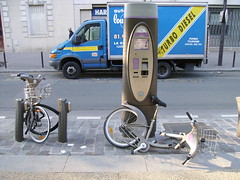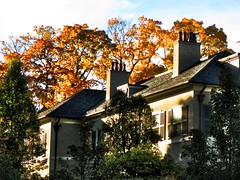The North County Times reports that there is a “convergence in values” between Mexican and American people:
In fundamental attitudes about work, religion, sex, politics, the free market and the like, we are becoming more like each other, according to polls during the last 30 years, and the melding is only likely to continue. The growing economic integration under the North American Free Trade Agreement, an explosion in travel and communication, and the fact that 10 percent of Mexicans now live here and that many Americans are retiring there help push the trend.
Recent survey and poll data provides insight:
Half of all Mexicans in 2005 supported actually abolishing the border, a doubling since 1980, according to the latest World Values Surveys, done by a global association of sociologists.
This is consistent with a September Pew study showing that a third of Mexicans would “say yes” to moving to the U.S., and 18 percent would do so “without authorization.” They are pulled by jobs and relatives here, helping reverse what historically had been a deep suspicion of the U.S.
Indeed, the World Values survey finds that the number of Mexicans who distrust Americans as a people plummeted from 52 percent in 1990 to 31 percent, while those who trust us grew. Mexicans overwhelmingly look favorably on President Barack Obama, Gallup and other polls show, but that is a more fickle political measure.
Far fewer Americans —- 18 percent in the World Values survey —- favor union with Mexico. But until the recent drug violence along the border, nearly two-thirds of Americans have supported closer ties and had favorable views of Mexico, according to various polls from the last 20 years.
Americans remain righteous about maintaining national identity, but so do Mexicans. In fact, the World Values survey shows that Mexicans have more national pride than Americans, by a margin of 83 percent to 66 percent.
Even the gap between individualist versus collective orientations seems to be narrowing:
In the 1950s, the celebrated sociologists David Riesman and William Whyte lamented the decline of individualism in America, and they were partially right, as Americans have steadily placed higher emphasis on what polls coincidentally show are Mexican values oriented toward community, family and group.
At the same time, Mexicans in 1980 placed little emphasis on encouraging children to be independent, imaginative or determined, but now do so almost as much as Americans, according to World Values.
So…
The list goes on, and what such convergence on broad values means, at the very least, is that mutual understanding becomes easier.



